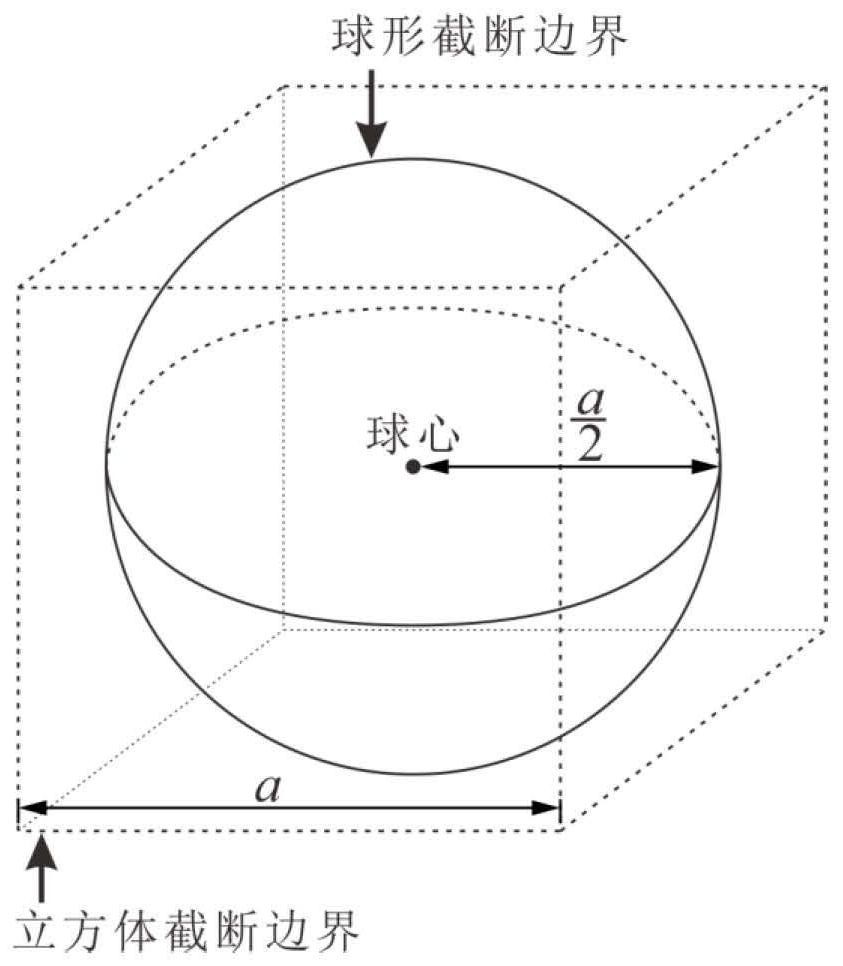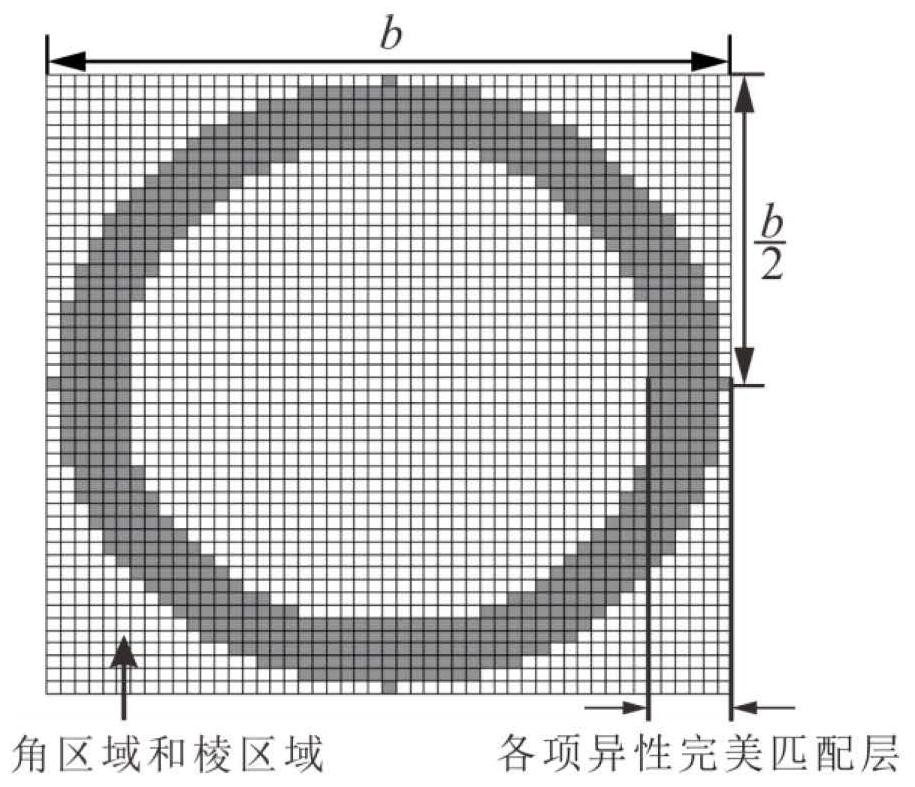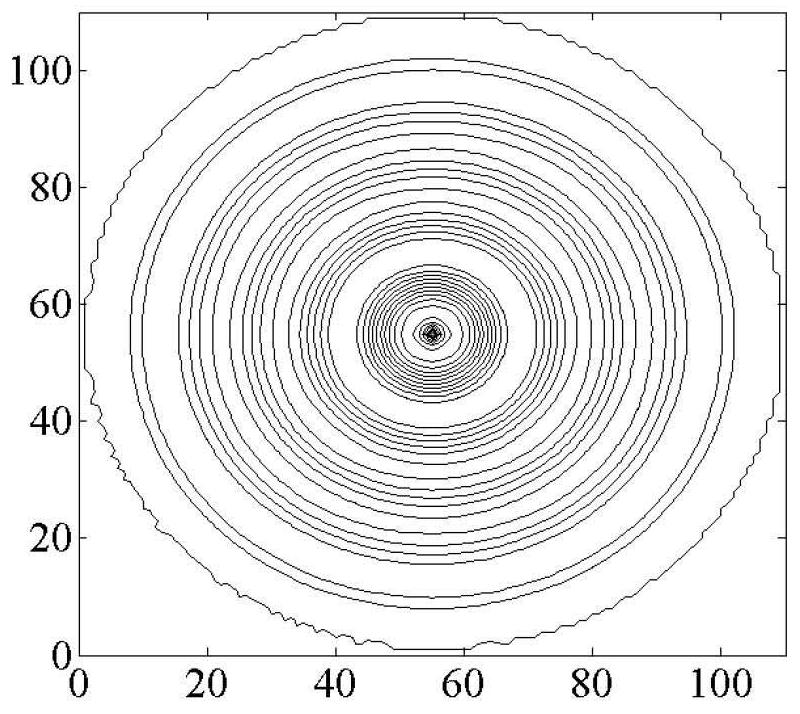Realization method of truncated boundary of anisotropic perfectly matched layer in Cartesian coordinate system
A Cartesian coordinate system, fully matched layer technology, applied in the field of computational electromagnetism, can solve problems such as affecting computational efficiency, narrow application range, and computational complexity, so as to overcome low computational efficiency, improve computational efficiency, and improve computational efficiency. Effect
- Summary
- Abstract
- Description
- Claims
- Application Information
AI Technical Summary
Problems solved by technology
Method used
Image
Examples
Embodiment 1
[0091] The implementation method of the truncated boundary of the anisotropic fully matched layer in the Cartesian coordinate system of the present embodiment is applied to a three-dimensional problem. The shape of the truncated boundary of the anisotropic fully matched layer is spherical, and the steps of the method are:
[0092] 1. Establish the model data of the object to be solved and the calculation space of the time-domain finite difference method;
[0093] Apply for memory space from the computer, and the overall calculation area is (X n ,Y n ,Z n )→(Xp,Y p ,Z p ), whose size is (X p –X n )×(Y p –Y n )×(Z p -Z n ), where X n =Y n =Z n , X p =Y p =Z p , the spatial steps in the x, y, and z directions are Δx, Δy and Δz respectively, and Δx=Δy=Δz, the calculation area within the truncation boundary is a vacuum state, and the current source of the time-harmonic field is selected as the excitation of the three-dimensional problem source, which defines the exc...
Embodiment 2
[0128] The steps of the implementation method of this embodiment are the same as those of Embodiment 1. The difference is that this embodiment is applied to the two-dimensional case, Δz is 0, and the cut-off boundary of the anisotropic fully matched layer is a circle, and the anisotropy in the two-dimensional case is verified The absorption effect of the implementation method of the fully matched layer truncated boundary. The size of the calculation area is set to 110×110, the space step is Δx=Δy=1mm, the time step is Δt=16.667ps, the whole calculation area is in a vacuum state, its conductivity is σ=0, and its magnetic permeability is μ 0 , the dielectric constant is ε 0 . Select the sinusoidal point source of the time-harmonic field as the excitation source, the expression is E inc =sin(2πf 0 NΔt), f 0 is the frequency of the source, and the number of iterations for the electromagnetic simulation is N=1000. Running the program from this results in image 3 As shown, wh...
Embodiment 3
[0130] The implementation method of this embodiment is applied in a three-dimensional situation, and the specific implementation method steps are the same as those in Embodiment 1, to verify the absorption effect of the implementation method of the truncated boundary of an anisotropic fully matched layer in a Cartesian coordinate system described in the three-dimensional situation. The size of the calculation area is set to 62×62×62, the space step is Δx=Δy=Δz=2mm, the time step is Δt=3.333ps, the conductivity of the calculation area is σ=0, and the magnetic permeability is μ 0 , the dielectric constant is ε 0 . An electric dipole is added at the coordinate point (30,30,30), and the current source is selected as the excitation source, and the expression is E inc =J 0 ×(t-t 0 )×exp(-(t-t 0 ) 2 / τ 2 ), and its electromagnetic simulation iteration number is N=1000. Run the program from this, and record the electric field intensity E at the coordinate point (30,30,30) z Th...
PUM
 Login to View More
Login to View More Abstract
Description
Claims
Application Information
 Login to View More
Login to View More - R&D
- Intellectual Property
- Life Sciences
- Materials
- Tech Scout
- Unparalleled Data Quality
- Higher Quality Content
- 60% Fewer Hallucinations
Browse by: Latest US Patents, China's latest patents, Technical Efficacy Thesaurus, Application Domain, Technology Topic, Popular Technical Reports.
© 2025 PatSnap. All rights reserved.Legal|Privacy policy|Modern Slavery Act Transparency Statement|Sitemap|About US| Contact US: help@patsnap.com



